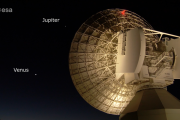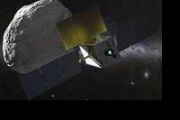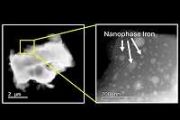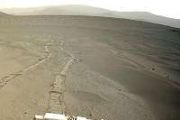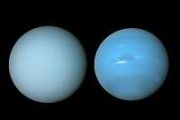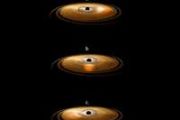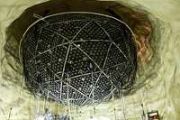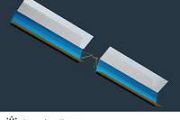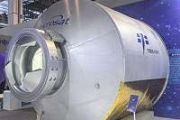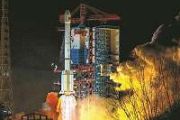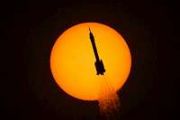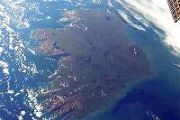
Copernical Team
Mars lost habitability due to its own climate self-limiting cycle
 Mars may once have flowed with rivers and lakes, but a new study led by University of Chicago planetary scientist Edwin Kite suggests its warm periods were fleeting and ultimately doomed by a self-regulating climate system. Published July 2 in Nature, the research presents a model in which increasing solar brightness briefly allowed water to flow before triggering a geochemical response that loc
Mars may once have flowed with rivers and lakes, but a new study led by University of Chicago planetary scientist Edwin Kite suggests its warm periods were fleeting and ultimately doomed by a self-regulating climate system. Published July 2 in Nature, the research presents a model in which increasing solar brightness briefly allowed water to flow before triggering a geochemical response that loc Heat sink technology put to the test aboard Australian satellite mission
 A research team led by mechanical science and engineering professor Mickey Clemon at the University of Illinois Urbana-Champaign is testing advanced cooling systems in space to improve heat sink performance for satellite electronics.
Space presents a unique challenge for electronics: high waste heat output with no atmosphere for convective cooling. To counteract this, the team embedded a w
A research team led by mechanical science and engineering professor Mickey Clemon at the University of Illinois Urbana-Champaign is testing advanced cooling systems in space to improve heat sink performance for satellite electronics.
Space presents a unique challenge for electronics: high waste heat output with no atmosphere for convective cooling. To counteract this, the team embedded a w Europe launches first geostationary atmospheric sounder to boost extreme weather forecasts
 Europe has advanced its ability to track extreme weather with the launch of the Meteosat Third Generation Sounder 1 (MTG-S1), the continent's first geostationary meteorological sounder. The satellite will deliver critical atmospheric data that supports earlier and more accurate weather alerts, helping to safeguard people, infrastructure, and economies.
MTG-S1 lifted off on 1 July 2025 and
Europe has advanced its ability to track extreme weather with the launch of the Meteosat Third Generation Sounder 1 (MTG-S1), the continent's first geostationary meteorological sounder. The satellite will deliver critical atmospheric data that supports earlier and more accurate weather alerts, helping to safeguard people, infrastructure, and economies.
MTG-S1 lifted off on 1 July 2025 and Competing wave patterns may unlock turbulent secrets in hypersonic vehicle design
 Recent progress in hypersonic aerodynamics has shed light on one of the field's longest-standing puzzles: the unpredictable transition from smooth to turbulent airflow around blunt-nosed vehicles. This transition dramatically increases drag and thermal load, posing a major challenge to hypersonic flight systems.
Traditionally, researchers attributed this boundary layer transition to modal
Recent progress in hypersonic aerodynamics has shed light on one of the field's longest-standing puzzles: the unpredictable transition from smooth to turbulent airflow around blunt-nosed vehicles. This transition dramatically increases drag and thermal load, posing a major challenge to hypersonic flight systems.
Traditionally, researchers attributed this boundary layer transition to modal China launches international association to boost global access to deep space research
 China will inaugurate the International Deep Space Exploration Association (IDSEA) next Monday, marking its first international academic body dedicated to aerospace. Based in Hefei, Anhui province, the association is designed to foster global collaboration, with an emphasis on empowering developing countries to access and advance deep-space technologies.
The IDSEA, co-founded by the Hefei-
China will inaugurate the International Deep Space Exploration Association (IDSEA) next Monday, marking its first international academic body dedicated to aerospace. Based in Hefei, Anhui province, the association is designed to foster global collaboration, with an emphasis on empowering developing countries to access and advance deep-space technologies.
The IDSEA, co-founded by the Hefei- Boeing expands SES O3b mPOWER fleet with latest satellite delivery
 Boeing has delivered the ninth and tenth O3b mPOWER satellites to SES, bolstering the satellite operator's growing medium Earth orbit (MEO) constellation. The two newly completed spacecraft are equipped with Boeing's fully software-defined payloads, enabling dynamic power allocation to meet real-time user demands. Both satellites are en route to Kennedy Space Center in Florida for a scheduled su
Boeing has delivered the ninth and tenth O3b mPOWER satellites to SES, bolstering the satellite operator's growing medium Earth orbit (MEO) constellation. The two newly completed spacecraft are equipped with Boeing's fully software-defined payloads, enabling dynamic power allocation to meet real-time user demands. Both satellites are en route to Kennedy Space Center in Florida for a scheduled su Bioplastic habitats could sustain algae growth for space colonization
 In a step toward sustainable extraterrestrial living, researchers at the Harvard John A. Paulson School of Engineering and Applied Sciences (SEAS) have demonstrated that green algae can thrive in bioplastic shelters under Mars-like conditions. The findings point to a future in which space habitats can grow-and even regenerate-using biological materials.
The team, led by Robin Wordsworth, P
In a step toward sustainable extraterrestrial living, researchers at the Harvard John A. Paulson School of Engineering and Applied Sciences (SEAS) have demonstrated that green algae can thrive in bioplastic shelters under Mars-like conditions. The findings point to a future in which space habitats can grow-and even regenerate-using biological materials.
The team, led by Robin Wordsworth, P European Launcher Challenge: preselected challengers unveiled

Watch live: Earth Explorer 11 User Consultation Meeting
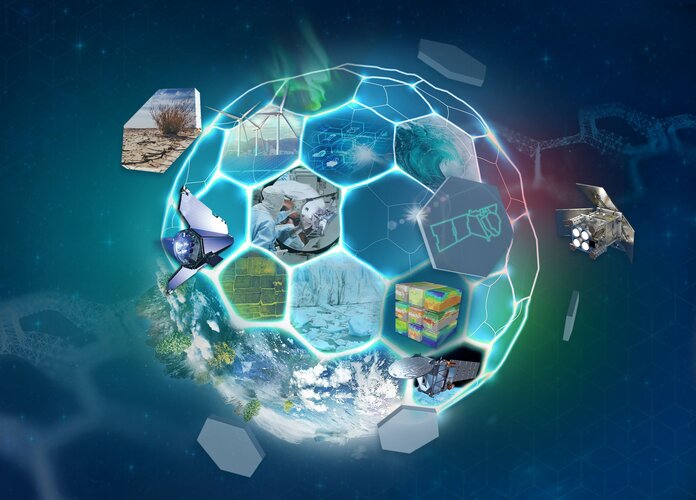
On 9 July 2025, leading scientists and experts in Earth observation will gather in Prague, Czechia, for a pivotal moment in Earth science – to delve into and debate the strengths of the two finalist candidate satellite missions, CAIRT and WIVERN, as they compete to be selected as ESA’s eleventh Earth Explorer.
Red, white and blue on the Red Planet
 On the eve of the 249th anniversary of American independence, NASA on Tuesday showcased a patriotic image of Old Glory as seen from hundreds of millions of miles away.
A plaque bearing the United States flag is on an aluminum plate at the base of the mast, or "head," of NASA's Perseverance rover on the Red Planet.
An image of the flag was taken on June 28 by the WATSON (Wide Angl
On the eve of the 249th anniversary of American independence, NASA on Tuesday showcased a patriotic image of Old Glory as seen from hundreds of millions of miles away.
A plaque bearing the United States flag is on an aluminum plate at the base of the mast, or "head," of NASA's Perseverance rover on the Red Planet.
An image of the flag was taken on June 28 by the WATSON (Wide Angl 







